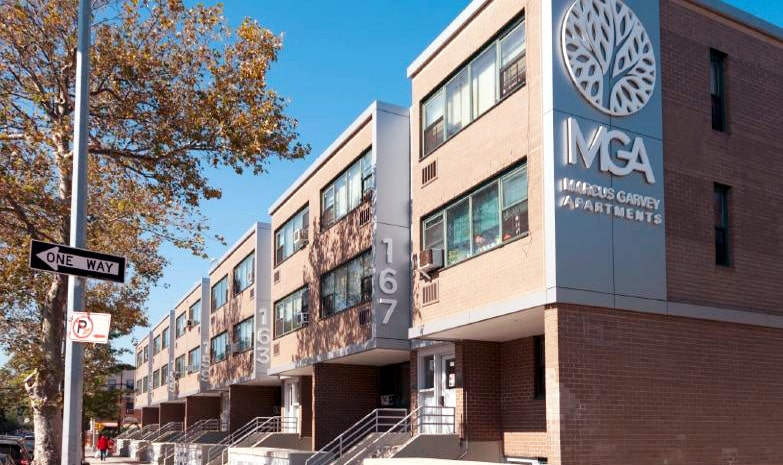As the nation’s most densely populated metropolis, New York City is a particularly challenging place to deploy both solar PV and battery storage. PV is challenged not only by shading issues, but by fire codes which require significant set-backs from the edge of buildings with flat roofs.
But if anything, the challenges with batteries are steeper. The dominant battery chemistry for grid-tied applications, lithium-ion, can have issues with “thermal runaway”, resulting in very hot fires which can be difficult to suppress. As such, it should be no surprise that the Fire Department of New York (FDNY) has been carefully studying issues with lithium-ion batteries.
Lithium-ion battery deployment hit a major milestone this week, with the completion of the first project to deploy such batteries in a multifamily unit. Demand Energy has completed a 1.2 megawatt-hour battery installation that accompanies a 400 kW PV array and a 400 kW fuel cell system as part of a microgrid at the Marcus Garvey Apartments, a 625-unit low-income housing development in Brownsville.
Through the use of Demand Energy’s DEN.OS software, residents of the 32 buildings in the Marcus Garvey Apartments will be able to use the electricity they generate without exporting to the grid. This is in line with ConEdison’s Brooklyn-Queens Demand Management (BQDM) Program, which uses storage and demand-side solutions to mitigate peak demand and avoid other grid investments.
Demand Energy notes that it worked closely with FDNY and the Department of Buildings to achieve approvals. City University of New York (CUNY) has also been working closely with FDNY on issues related to battery storage, with the aim of enabling batteries to provide a more resilient grid in the event of blackouts.
This content is protected by copyright and may not be reused. If you want to cooperate with us and would like to reuse some of our content, please contact: editors@pv-magazine.com.









By submitting this form you agree to pv magazine using your data for the purposes of publishing your comment.
Your personal data will only be disclosed or otherwise transmitted to third parties for the purposes of spam filtering or if this is necessary for technical maintenance of the website. Any other transfer to third parties will not take place unless this is justified on the basis of applicable data protection regulations or if pv magazine is legally obliged to do so.
You may revoke this consent at any time with effect for the future, in which case your personal data will be deleted immediately. Otherwise, your data will be deleted if pv magazine has processed your request or the purpose of data storage is fulfilled.
Further information on data privacy can be found in our Data Protection Policy.